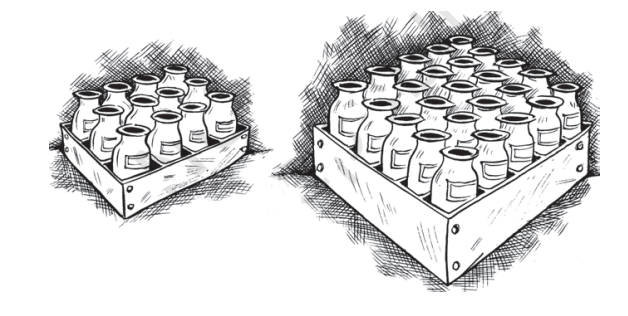NCERT Solutions for Maths Class 8 Chapter 11 Exercise 11.2 - FREE PDF Download
FAQs on NCERT Solutions for Class 8 Maths Chapter 11 Direct And Inverse Proportions Ex 11.2
1. What is the focus of Class 8 Maths Ch 11 Ex 11.2?
Class 8 Maths Chapter 11 Exercise 11.2 Solutions focuses on the concepts of direct and inverse proportions. It involves understanding how two quantities relate to each other, either increasing together or increasing while the other decreases.
2. Why are direct and inverse proportions important in Class 8 Maths Chapter 11 Exercise 11.2 Solutions?
Direct and inverse proportions are important because they help us understand the relationship between two quantities in various real-life situations, such as speed and travel time, or workers and the time taken to complete a task.
3. How is direct proportion represented mathematically in Class 8 Maths Ch 11 Ex 11.2?
According to Class 8 Maths Ch 11 Ex 11.2, Direct proportion is represented by the formula $\frac{x}{y}=k$, where 𝑥 and 𝑦 are the two quantities, and 𝑘 is a constant. This means that as one quantity increases, the other also increases at a constant rate.
4. How is inverse proportion represented mathematically in Class 8 Maths Ch 11 Ex 11.2?In Class 8 Maths Ch 11 Ex 11.2 Inverse proportion is represented by the formula $x\times y=k$, where 𝑥 and 𝑦 are the two quantities, and 𝑘 is a constant. This means that as one quantity increases, the other decreases at a constant rate.
In Class 8 Maths Ch 11 Ex 11.2 Inverse proportion is represented by the formula $x\times y=k$, where 𝑥 and 𝑦 are the two quantities, and 𝑘 is a constant. This means that as one quantity increases, the other decreases at a constant rate.
5. Can you give an example of a direct proportion problem in Maths Class 8 Chapter 11 Exercise 11.2?
An example of a direct proportion problem is if the cost of 5 apples is Rs. 100, then the cost of 10 apples would be Rs. 200. This is because the cost increases in direct proportion to the number of apples.
6. Can you give an example of an inverse proportion problem in NCERT Solutions for Class 8 Maths Chapter 11 Exercise 11.2?
An example of an inverse proportion problem is if 4 workers can complete a task in 8 hours, then 8 workers can complete the same task in 4 hours. This is because the time taken decreases as the number of workers increases.
7. Why is it important to understand the constant 𝑘 in proportions in NCERT Solutions for Class 8 Maths Chapter 11 Exercise 11.2?
Understanding the constant 𝑘 is important because it helps to identify the relationship between the quantities involved. It allows us to predict how one quantity will change when the other changes.
8. How can practising NCERT Solutions for Class 8 Maths Chapter 11 Exercise 11.2 help in exams?
Practising NCERT Solutions for Class 8 Maths Chapter 11 Exercise 11.2 helps students become familiar with the types of problems that can appear in exams. It also enhances their problem-solving skills and understanding of direct and inverse proportions, which are common in many maths problems.
9. Are there any real-life applications of direct and inverse proportions in NCERT Solutions for Class 8 Maths Chapter 11 Exercise 11.2?
Yes, there are many real-life applications of direct and inverse proportions, such as calculating travel time based on speed, determining the amount of ingredients needed for a recipe, and understanding the relationship between distance and time in physics.
10. What should students focus on when solving NCERT Class 8 Maths Chapter 11 Exercise 11.2 problems?
Students should focus on, correctly identifying whether the problem involves direct or inverse proportion. They should then apply the appropriate formula and carefully solve for the unknown quantity.
11. How do Vedantu's NCERT Solutions help with NCERT Class 8 Maths Chapter 11 Exercise 11.2?
Vedantu's NCERT Solutions provides step-by-step explanations and detailed answers to all the questions in NCERT Class 8 Maths Chapter 11 Exercise 11.2. These solutions help students understand the concepts better and improve their problem-solving skills, making it easier to tackle similar questions in exams.



















